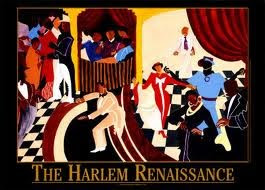True, from dark-skinned sources have come those slave songs based on Protestant hymns and Biblical texts known as the spirituals, work songs and secular songs of sorrow and tough luck known as the blues, that outgrowth of ragtime known as jazz (in the development of which whites have assisted), and the Charleston, an eccentric dance invented by the gamins around the public market-place in Charleston, S. C. No one can or does deny this. But these are contributions of a caste in a certain section of the country. They are foreign to Northern Negroes, West Indian Negroes, and African Negroes. They are no more expressive or characteristic of the Negro race than the music and dancing of the Appalachian highlanders or the Dalmatian peasantry are expressive or characteristic of the Caucasian race. If one wishes to speak of the musical contributions of the peasantry of the south, very well. Any group under similar circumstances would have produced something similar. It is merely a coincidence that this peasant class happens to be of a darker hue than the other inhabitants of the land. One recalls the remarkable likeness of the minor strains of the Russian mujiks to those of the Southern Negro.
As for the literature, painting, and sculpture of Aframericans—such as there is—it is identical in kind with the literature, painting, and sculpture of white Americans: that is, it shows more or less evidence of European influence. In the field of drama little of any merit has been written by and about Negroes that could not have been written by whites. The dean of the Aframerican literati written by and about Negroes that could not have been written by whites. The dean of the Aframerican literati is W. E. B. Du Bois, a product of Harvard and German universities; the foremost Aframerican sculptor is Meta Warwick Fuller, a graduate of leading American art schools and former student of Rodin; while the most noted Aframerican painter, Henry Ossawa Tanner, is dean of American painters in Paris and has been decorated by the French Government. Now the work of these artists is no more “expressive of the Negro soul”—as the gushers put it—than are the scribblings of Octavus Cohen or Hugh Wiley.
This, of course, is easily understood if one stops to realize that the Aframerican is merely a lampblacked Anglo-Saxon. If the European immigrant after two or three generations of exposure to our schools, politics, advertising, moral crusades, and restaurants becomes indistinguishable from the mass of Americans of the older stock (despite the influence of the foreign-language press), how much truer must it be of the sons of Ham who have been subjected to what the uplifters call Americanism for the last three hundred years. Aside from his color, which ranges from very dark brown to pink, your American Negro is just plain American. Negroes and whites from the same localities in this country talk, think, and act about the same. Because a few writers with a paucity of themes have seized upon imbecilities of the Negro rustics and clowns and palmed them off as authentic and characteristic Aframerican behavior, the common notion that the black American is so “different” from his white neighbor has gained wide currency. The mere mention of the word “Negro” conjures up in the average white American’s mind a composite stereotype of Bert Williams, Aunt Jemima, Uncle Tom, Jack Johnson, Florian Slappey, and the various monstrosities scrawled by the cartoonists. Your average Aframerican no more resembles this stereotype than the average American resembles a composite of Andy Gump, Jim Jeffries, and a cartoon by Rube Goldberg.
To read more about this article, Click Here.

